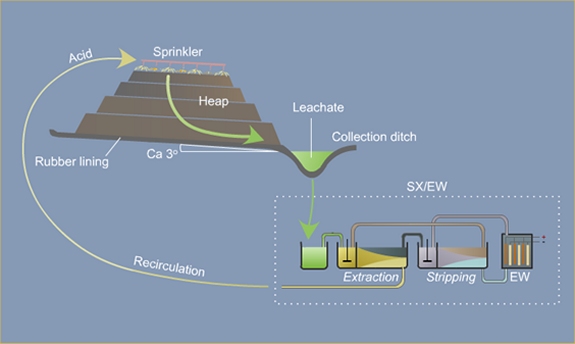Overview by Dylan Nelson
In the 1970s, open-pit cyanide heap leach mining was a very new and poorly understood technique. The process involves excavating huge quantities of mountainous rock and spraying that rock with a cyanide solution to separate out precious metals. The Zortman and Landusky mines were the first in the state of Montana and among the first in the country to utilize the technique, something Pegasus Gold advertised as an innovation in the field. The effects of these mines on the Fort Belknap community can generally be categorized into two categories: cultural and environmental.
The cultural impacts of the Pegasus mines are mostly unambiguous. Going at least as far back as the mid-19th century, the Little Rockies and other island mountain ranges around the Hi-Line were important cultural, religious, and military sites for the Gros Ventres, Assiniboines, and other American Indian communities in the region. Throughout the 20th century, the Little Rocky Mountains and the surrounding areas were used for ceremonies, festivals, and some harvesting, and the Fort Belknap Community Council made repeated attempts to negotiate their return to their community. In the final decades of the 20th century, many Fort Belknap residents used the Little Rockies for fasting and other religious activities, influenced in part by the cultural and political resurgence of the national American Indian Movement. The Pegasus mines completely defaced some peaks in the Little Rockies, required the construction of roads and leach pads (some were many times larger than football fields), and involved the consistent operation of loud and very large machinery. The cultural consequences of that destruction are best understood through the reactions of Fort Belknap residents, many of which can be found throughout this website. They included the formation of multiple nonprofit organizations, partnerships with lawyers and other state and national nonprofits, and the production of multiple documentary films to record the heartbreak of Fort Belknap residents over the desecration of the Little Rockies and the disruption of their intergenerational lifeways. This was well understood at the time. For example, a 1996 environmental impact statement prepared by the Montana Department of Environmental Quality and the federal Bureau of Land Management for a proposed mine expansion explained, “As long as the mines continue to operate, these impacts remain a significant and serious issue for Native American traditionalists.”1
The environmental impacts of the mines are more difficult to understand. The surface damage caused by the mines is indisputable and can be seen from miles away. Confusion emerges surrounding water pollution. The main way waterways surrounding the Zortman and Landusky mines could have been polluted was through the leaking of contaminants like cyanide, arsenic, and lead or through the production of acid rock drainage. Up until the mid-1990s, most of the attention was directed towards cyanide. Multiple reviews found that between 1977 and 1995, there were multiple discharges of cyanide from leaks, spills, overflows, and emergency disposals at the Zortman and Landusky sites. The ultimate consequences of these discharges remain disputed, though residents of Fort Belknap reported seeing dramatic reductions in wildlife populations and even reported higher incidences of birth defects in children born in the late 1980s and early 1990s. By the mid-1990s, it was abundantly clear that the main source of water pollution at the Zortman and Landusky mines was acid rock drainage. Acid rock drainage is the production of acidic water upon exposing sulfides in prehistoric rock to air and water, causing oxidation. The original 1979 environmental impact statement concluded that operations in the Little Rockies would not uncover sulfides but this was likely a result of meager testing, insufficient knowledge and technology, and potentially pressure from state politicians receiving campaign contributions from mining interests. Acid rock drainage was first discovered in the Little Rockies by the Montana Department of Environmental Quality in 1992 and they have been treating those waters ever since. Once acid rock drainage is generated, it cannot be stopped but only contained. For that reason, water treatment will be required at the Zortman and Landusky sites for decades to centuries.
1 United States Department of the Interior, Bureau of Land Management, Lewistown District Office, and State of Montana, Department of Environmental Quality, Hard Rock Bureau, Final Environmental Impact Statement: Zortman and Landusky Mines, Reclamation Plan Modifications and Mine Life Extensions (March 1996), pg. ES 48. Available here.

Image credit: Zarbarg (Own work) [CC BY-SA 4.0], via Wikimedia Commons


